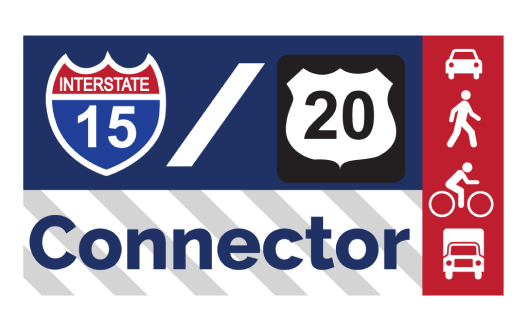
I-15/US-20 Connector
I-15 and US-20 in Idaho Falls provide important connections to the City of Idaho Falls, Bonneville County, and the Eastern Idaho region.
The Idaho Transportation Department (ITD), in coordination with the Federal Highway Administration (FHWA), is conducting an Environmental Impact Statement (EIS) to evaluate potential improvements to provide safe and reliable travel between and along Interstate 15 (I-15) and U.S. Highway 20 (US-20), a project commonly known as the I-15/US-20 Connector project. The study area is in Idaho Falls and Bonneville County, Idaho.
EIS Scoping Meeting Summary
The Idaho Transportation Department (ITD) held an in-person public scoping meeting on October 18 and an online scoping meeting from October 11 through October 25. ITD received 157 comments during the 2-week comment period.
Comments were received in the following ways:
- 94 through the online meeting comment form
- 24 at the in-person meeting
- 39 through email, traditional mail, or the project website
Of comments that indicated a perference for an alternative:
- 53 were in favor of E3 alternative
- 21 were in favor of H2 alternative
- 12 were in favor of the no-build alternatives
Some comments did not identify a preference on alternatives.
The full summary, including notification and meeting materials is now available. Identifying information such as physical and email addresses was redacted from sign-in sheets and comment forms to protect privacy.
View the full summaryPurpose & Need
The purpose of the I-15/US-20 Connector project is to address safety, congestion, mobility, and travel time reliability for efficient movement of people, goods, and services on I-15 and US-20 in or near Bonneville County and Idaho Falls.
The needs for the project are related to multimodal and capacity improvements to I-15 and US-20 to address safety concerns on I-15 and US-20; reduce congestion at the I-15/US-20 interchanges; provide pedestrian and bicycle mobility within and across the I-15 and US-20 corridors; and address future travel demand.
Improvements are necessary to address the following needs: unsafe travel conditions caused by substandard weave/merge distances, unacceptable level of service at signalized ramp terminals, and poor pedestrian and bicycle mobility along and across the corridors.
Upcoming Engagement Opportunities
There are no upcoming engagement opportunities at this time.
Schedule
The schedule for completing the EIS is dynamic and may change based on issues identified during analysis. Once the Notice of Intent is published, the EIS must be completed within 24 months. Several of the activities will be completed concurrently and include the following:

- August 2022 - Notice of Intent
- October 2022 - Agency and Public Scoping Meetings
- July-August 2023 - Draft Environmental Impact Statement Published and 60-day Comment Period, and Public Hearing
- Early 2024 - Publish Final Environmental Impact Statement for Public Review
- Summer 2024 - Issue Final Environmental Impact Statement and Record of Decision
- October 2024 - Issue All Project Permits and Authorization Decisions
Project Study Area
The project area of potential impact encompasses the alignments of both build alternatives and will serve as the basis for alternatives evaluation in the EIS. Specific areas of potential impact may be established for individual resources.

Submit a Comment
If you have a general comment or question, please complete the general comment form but click on the button below or by emailing us.
Submit a General CommentSubmit a General Comment
Documents and Resources
- EIS Documents
- Engagement Materials
- PEL Documents

